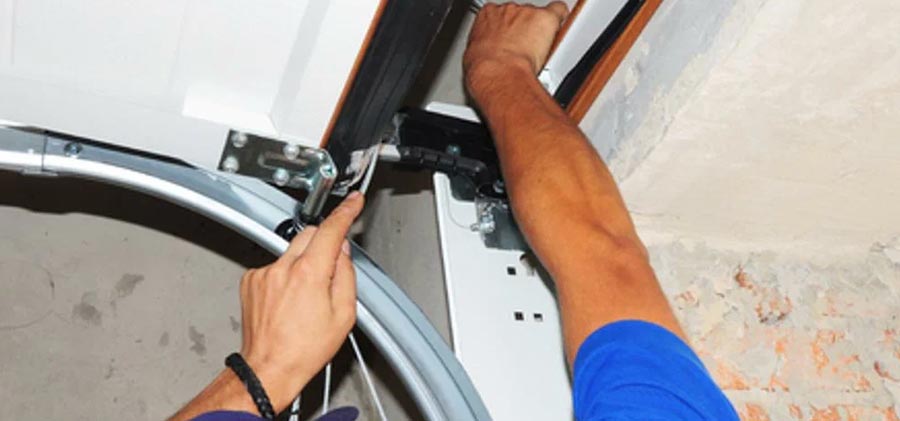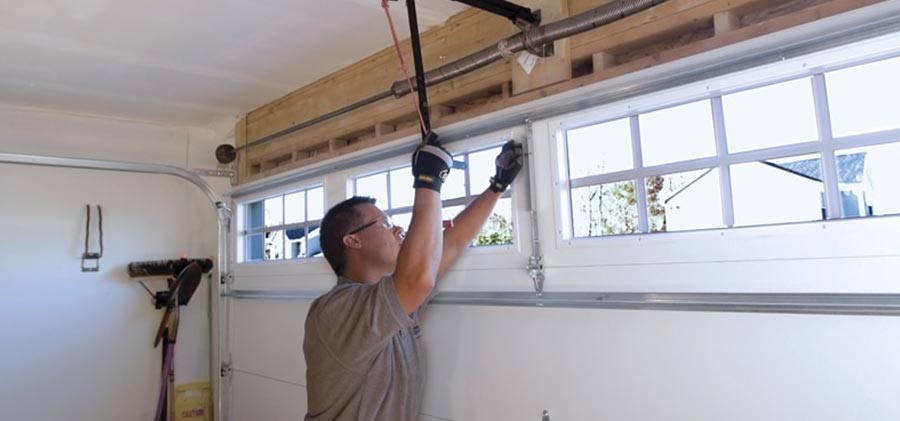Garage doors are essential to our homes, providing safety and convenience. At the heart of their operation are garage door springs. These springs make it easy to open and close your garage door, but they can wear out over time.
Let us discuss garage door spring repair, including spring wear and tear, snap causes, and maintenance tips you can use to keep your springs in good condition.

How Garage Door Springs Function?
Garage door springs come in two main types: extension springs and torsion springs. Each type has a unique role in lifting and lowering your garage door.
Extension Springs:
Typically found on the sides of the door, these springs stretch when the door closes. They store energy while extended, helping to lift the door back up.
Torsion Springs:
Positioned above the garage door, torsion springs wind up as the door opens. They provide the lift needed to raise the door efficiently.
Understanding how these springs function helps in identifying why you might need garage door spring repair.
Common CausesOf Spring Breaking
Spring breaking can cause permanent damage to the spring, resulting in damaged or broken materials. Similarly, we can also experience spring snapping issues, which creates a loud noise, and the garage door may become difficult or impossible to operate. There are several factors that cause both these issues:
- Wear and Tear: With regular use, garage door springs will inevitably experience wear and tear. The constant tension placed on the springs can lead to fatigue over time, causing them to break.
- Age: Each spring is designed to function for a certain number of cycles, typically between 10,000 and 20,000. After reaching this limit, springs are more likely to snap.
- Rust and Corrosion: Exposure to moisture can lead to rust forming on the springs. Rust weakens the metal, increasing the likelihood of a break.
- Improper Installation: If springs are not installed correctly, they might not work well together. This can cause one spring to handle more weight, resulting in quick wear or snapping.
Signs You Need Garage Door Spring Repair
How do you know when your garage door springs need attention? Here are a few signs to watch out for:
- Noise: If you hear a loud bang or popping sound when you open or close your garage door, it may indicate that a spring has snapped.
- Unbalanced Door: If your garage door appears crooked or uneven, it could be a sign of garage balance issues, often related to spring problems.
- Difficulty Opening the Door: If the door feels heavy or doesn’t open smoothly, it may indicate that the springs are worn out or malfunctioning.
Importance of Spring Maintenance
Regular spring maintenance is crucial for prolonging the life of your garage door springs. Here are tips to keep in mind:
- Lubricate the Springs: At least twice a year, apply a silicone-based lubricant to your springs. This helps reduce friction and prevents rust.
- Regular Inspections: Have your garage door system inspected periodically by a professional. This way, you can catch any potential issues with the springs before they lead to a break.
- Annual Balance Check: Each year, check the balance of your garage door. An unbalanced door can strain the springs, wearing them out faster than normal.
- Look for Signs of Corrosion: Regularly check your springs for any signs of rust or corrosion. If you notice any, address the issue immediately to prevent further damage.
Addressing these spring wear and tear issues early can help prevent the need for more extensive repair down the line.

Upgrading to High-Cycle Springs
If you use your garage door frequently, consider upgrading to high-cycle springs. These springs are designed to last longer and handle more cycles than standard springs. They can be particularly beneficial for busy households or businesses that require reliable garage door operation.
Conclusion
Garage door springs are vital components for the smooth operation of your garage door. Understanding the reasons behind spring snapping causes, such as wear and tear and improper installation, is essential for maintaining your garage door system.
By following a regular maintenance routine, checking for signs of wear, and knowing when to call in experts, you can prevent significant issues in the future. If you ever find yourself needing garage door spring repair, don’t hesitate to reach out for professional help.
FAQs
Signs that your garage door springs may need repair include a loud bang or snapping noise when operating the door, uneven positioning of the door while open or closed, difficulty in opening or closing the door, or visible rust and other signs of wear. If you notice any of these issues, it’s wise to have your springs inspected.
High-cycle springs are designed to endure more cycles—up to 30,000 or more—compared to standard springs. They are ideal for households or businesses that frequently use their garage doors. Investing in high-cycle springs can reduce the frequency of spring replacements and save you money on repairs in the long run.
It’s essential to hire a professional for complex repairs or replacements. Garage door springs are under high tension, and improper handling can lead to severe injuries. It’s best to seek expert assistance if you’re unsure about the repair process or if you encounter any significant issues.


